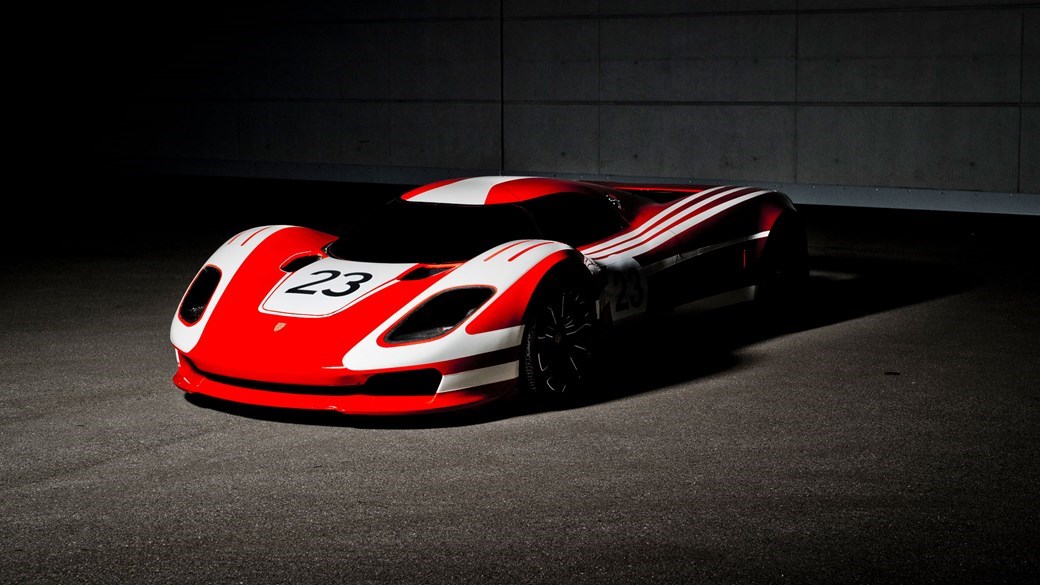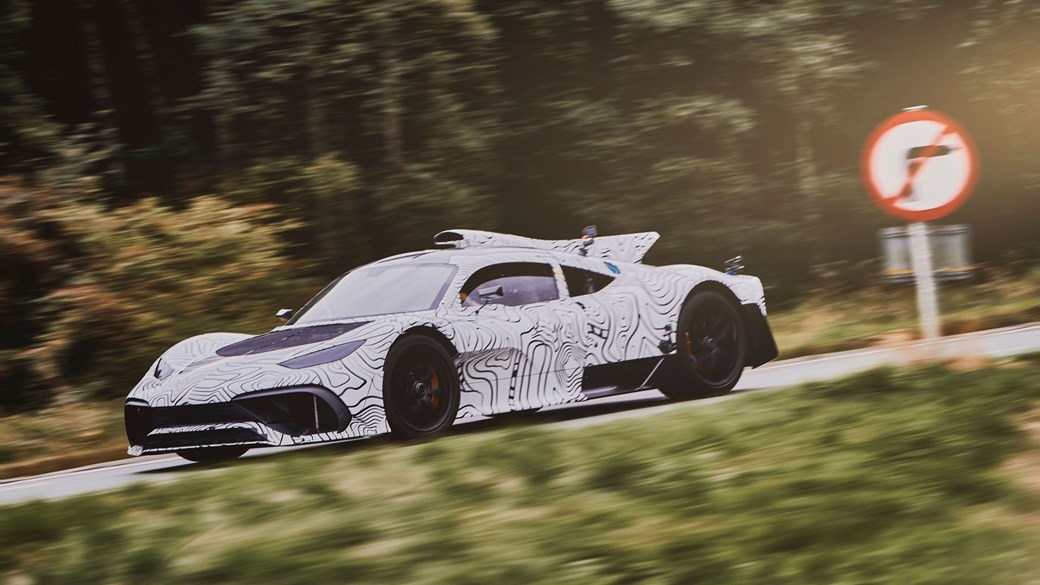4trac:
Boxster Coupe GTS:
There is an interesting point for those who still enjoy driving a car with an internal combustion engine... 
While it is likely we will see more hybrid engines in motorsport (e.g. Porsche 919 Hybrid, Porsche 911 GT3 R Hybrid) there seems little prospect of pure EV racecars being competitive in 24 hour racing any time soon...
You sure? What if pit stops became battery swaps with modular fast change batteries? .. 
Le Mans hypercar 2020/2021 rules: all you need to know
(18 November 2019)

► New rules for 2020/2021
► Toyota and Aston Martin already signed up
► Hybrid and non-hybrids allowed
After much conjecture, endurance racing’s so-called Hypercar class has been confirmed. At the Le Mans 24 hours in June, Toyota and Aston Martin announced their commitment to the series. The World Endurance Championship (WEC) now runs summer-to-summer, meaning there’ll be one more season (2019/2020) of the current regulations before the Hypercar class goes live in 2020/2021. And it promises to make the WEC the most exciting motorsport on the planet.
Why did endurance racing need to make changes?
Prototypes have ruled the WEC for years, and at times the top LMP1 class has been sensational. Just a few years ago factory-backed entries from Porsche, Toyota, Audi and Nissan battled each other at unreal speeds, with each manufacturer taking a different approach to a refreshingly open set of regulations. At its peak, we saw front-engined V6s racing mid-engined V8s, diesels and a hybrid Porsche powered by a turbocharged 2.0-litre V4… Awesomely quick, the cars both fast-tracked and showcased key emergent technologies, primarily petrol-electric hybrid powertrains.
But LMP1’s star has waned. The cars are fabulously expensive to develop, they don’t look anything like the cars manufacturers actually sell and – in part because of the gold rush to Formula E – all the factories bar Toyota went elsewhere. ‘It’s hard to define a return on investment when your racing car doesn’t look like any of the cars you sell,’ says Aston Martin CEO Andy Palmer. ‘I’m not a great fan of prototype racing. It’s for the drivers and racing teams, as opposed to being for the fans.
‘About two years ago, the ACO [Le Mans’ organising body] and the FIA came to the manufacturers and asked us where we’d like to see endurance racing going. My answer was simple: the best supercars and hypercars fighting on the track. I hope that was the planting of a seed.
‘What’s more, with the [LMP1] regulations as they are, teams were spending hundreds of millions looking for every opportunity to improve. It [the new class] makes it possible and affordable for a company like Aston Martin to compete with a company like Toyota.’
It’s reckoned LMP1’s biggest teams were spending €200m (£180m) per year during the glory years. The FIA has stated that manufacturers should be able to fund a Hypercar season for a quarter of that figure, and much less for privateers.
Who’ll contest the Hypercar class, and why should I care?
Toyota is developing two closely-related cars, a low-volume, big-ticket GR Super Sport road car and a dedicated racer (the Hypercar class is open to both suitable prototypes and homologated road cars).
Both draw heavily on Toyota’s currently hybrid LMP1 prototype, the TS050, with carbonfibre monocoques and hybrid powertrains built around a mid-mounted 2.4-litre V6.

‘The road-car project has been full steam ahead for a couple of years,’ says Toyota Motorsport spokesman Alastair Moffitt. ‘The road car wasn’t impacted by the indecision we’ve seen around the regulations. We started work on the race car in the light of last year’s regulations [the ‘Hyperclass’ was announced in broad terms at Le Mans 2018] but, when we couldn’t get confirmation that the regulations would materialise, we put race-car development on hold – and it’s been on hold now for a couple of months. Now we have confirmation, we’ll have the race car on track for the first time in the middle of next year – pretty close to the start of the first Hypercar season.’
Aston Martin will race the Valkyrie, the Adrian Newey- sculpted, Cosworth V12-powered work of art, thereby rolling back the years to a time before diesels and hybrids when rampaging naturally-aspirated V10s and V12s ruled Le Mans. When even F1 now echoes to the muted moan of turbocharged and hybrid-boosted V6s, this is sensational news. Peugeot has also since joined the Hypercar party.

What’s more, the Hypercars won’t be much slower than the current generation of hybrid prototypes. The key numbers are 1100kg, 750bhp and a target lap time of 3min 30sec. The Toyotas that dominated Le Mans this year are lighter and more powerful, with a fastest race lap of 3min 17sec. While that gap might feel like a backward step to Toyota and its drivers, fans won’t spot the difference – not least because the Hypercars will undoubtedly sound faster. And it’s a measure of how modest those performance targets are that both the GR Super Sport and Valkyrie will have to be turned down to comply…
‘It’ll have to be significantly de-tuned,’ explains Palmer. ‘Valkyrie is one of the most extreme performance cars ever. It has F1 heritage, and now there’s the potential to own endurance racing, which is about great engineering, durability, quality and reliability. If it ticks all those boxes then you have a car that’s both the ultimate performer and capable of enduring the most difficult race in the world, Le Mans.’
Other manufacturers with at least an eye on the series? That list includes Ferrari, Lamborghini, Porsche and McLaren to name but four… Given Porsche is thought to spend €20m (£18m) a year racing its GTE Pro 911 RSRs, the Hypercar class could prove tempting. Plus of course Porsche unveiled the astonishingly beautiful 917 concept study back in May…
Aston’s Palmer hopes the entry list doesn’t stall at two. ‘Aston Martin and Toyota have said we’ll give it a go, but I sincerely hope we’ll see Porsche, McLaren, Ferrari, because why wouldn’t you? If you think your hypercar’s the best, come and test it.’
Why have the rules taken so long to nut out?
‘There’d been a few false dawns,’ explains Toyota’s Moffitt. ‘The other manufacturers were naturally keen to avoid a spending war. No manufacturer wants to lose badly, as Nissan experienced, but equally they don’t want to burn money like crazy in order to not lose, because then you start to lose the return on investment. They wanted assurances that budgets would be kept under control, and that there’d be parity between the cars.
‘Another issue was whether a hybrid was compulsory. Originally it was intended that it would be, but a compromise was reached. Related to that was the issue of whether or not hybrids should be advantaged. The LMP1 regulations have always included an implicit small advantage to hybrids, to encourage manufacturers to develop more powerful systems. That’s not the case in the Hypercar class.’

How will close racing and modest spending be maintained?
While relatively modest performance targets are part of the solution, the answer to significantly reduced spending is primarily the Balance of Performance (BoP) rule-tweaking that keeps the production-based GTE Pro class (contested by Ferrari 488s, Porsche 911 RSRs and Aston’s Vantage, for example) so closely matched.
From analysis of each car’s performance in forensic detail, BoP plays with myriad variables, from boost pressure through ballast to fuel capacity and engine air restrictor size, to ensure close racing. What’s more, because you’ll be artificially slowed anyway, there’s no point spending the equivalent of a decent nation’s GDP on go-faster R&D. GTE Pro’s proved BoP works – though it isn’t popular among purists or teams hit by handicaps, as Aston Martin’s factory cars were at Le Mans this year.
‘The BoP system, while clearly sometimes imperfect, does at least bring the cost of entry right down,’ says Palmer. ‘There’s no point making everything out of gold and magnesium because you’re going to get BoP’d anyway.’
‘In principle we don’t like Balance of Performance,’ agrees Toyota’s Moffitt. ‘We’d rather go out and win on merit. But if that’s the way to bring in competition and have a strong series then let’s go for it.’
However it all shakes out ahead of the Hypercar class’s debut in 2020, Le Mans 2021 should serve up one hell of a fight and be one heck of a spectacle.
Link: https://www.carmagazine.co.uk/features/car-culture/le-mans-wec-hypercar/


